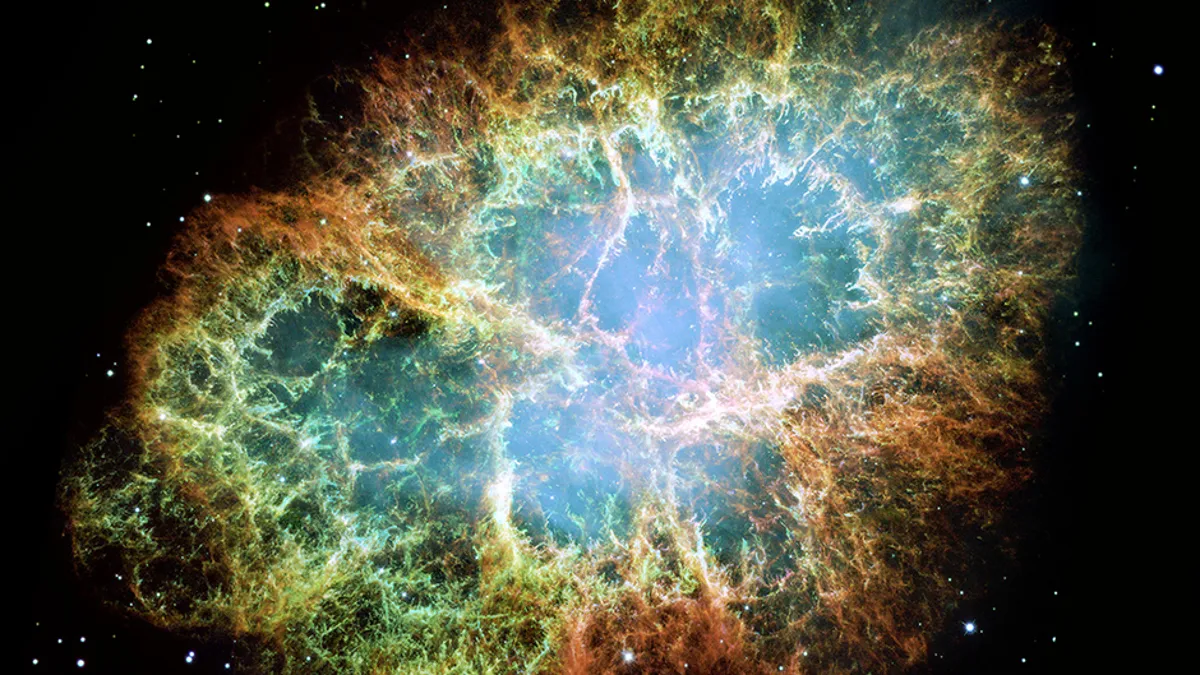
The vastness of the universe never ceases to amaze us, with its countless galaxies, stars, and cosmic wonders. Amongst these celestial marvels, nebulae stand out as some of the most awe-inspiring and captivating formations. Nebulae, composed of dust, hydrogen, helium, and other ionized gases, create stunning displays of colors and shapes that spark wonder and curiosity.
In this article, we will delve into the world of nebulae and explore 9 mind-blowing facts that will take your understanding of these cosmic phenomena to new heights. From the breathtaking beauty of the Pillars of Creation to the birthplaces of stars, prepare to be enchanted by the secrets and mysteries hidden within these magnificent celestial clouds.
Key Takeaways:
- Nebulae are vast, colorful clouds in space that play a crucial role in the birth and death of stars, providing insights into the history of the universe.
- Some nebulae, like the Crab Nebula and the Cat’s Eye Nebula, exhibit unique structures and emit powerful radiation, making them fascinating subjects for scientific study.
Nebulae are vast clouds of gas and dust in space.
Nebulae, also known as interstellar clouds, are regions in space where gas and dust particles come together to form stunningly beautiful formations. These cosmic marvels can span several light-years in size and are often the birthplaces of stars and planetary systems.
Nebulae come in different shapes and colors.
One of the fascinating aspects of nebulae is their variety in appearance. Some nebulae take the form of colorful glowing clouds, like the famous Orion Nebula, while others appear as dark, dense regions, such as the Coalsack Nebula. The colors of nebulae result from the different elements present and the interaction of starlight with the surrounding gas and dust.
One of the most well-known nebulae is the Crab Nebula.
The Crab Nebula, located in the constellation Taurus, is a remnant of a supernova explosion that was observed by astronomers in the year This nebula emits radiation across the entire electromagnetic spectrum and is a source of fascination for scientists studying the remnants of stellar explosions.
Nebulae play a crucial role in the formation of new stars.
The collapse of a nebula under its own gravitational force can trigger the birth of new stars. Within the dense cores of nebulae, gas and dust come together, creating a protostar that eventually evolves into a full-fledged star. Thus, nebulae serve as stellar nurseries, shaping the evolution of galaxies.
Nebulae can also be stellar graveyards.
While nebulae are often associated with the birth of stars, they can also be the final resting place for massive stars. When such stars exhaust their nuclear fuel, they may undergo a supernova explosion, leaving behind a nebula known as a supernova remnant. These remnants contain enriched elements that are dispersed back into the universe.
The Cat’s Eye Nebula exhibits peculiar structures.
The Cat’s Eye Nebula, located in the constellation Draco, is renowned for its intricate and unique features. Its central star expelled its outer layers, creating concentric rings of material that resemble the eyes of a feline. This nebula provides insights into the late stages of stellar evolution.
Nebulae can emit powerful radiation.
Many nebulae emit intense ultraviolet radiation and other forms of electromagnetic radiation. The radiation comes from young, hot stars within the nebulae that ionize the surrounding gas, causing it to glow. This ionized gas is responsible for the vibrant colors often seen in nebulae.
Some nebulae contain protoplanetary discs.
Protoplanetary discs are found in young nebulae and serve as the building blocks for the formation of planets. Within these discs, solid particles collide and merge, eventually forming planetesimals. These planetesimals can then continue to grow through accretion, leading to the formation of planets.
Nebulae provide a glimpse into the history of the universe.
By studying the composition and structure of nebulae, scientists can gain insights into the early stages of the universe. Nebulae act as time capsules, preserving the chemical elements and conditions of the past. They help astronomers unravel the mysteries of our cosmic origins.
Conclusion
In conclusion, learning about nebulas can be a mind-blowing experience. These awe-inspiring celestial phenomena showcase the astounding beauty and complexity of our Universe. From their stunning colors and shapes to their role in the formation of stars, nebulas continue to captivate scientists and amateur stargazers alike. Exploring the vastness of space and unraveling the mysteries of nebulas allows us to gain a deeper understanding of the Universe we inhabit. So, the next time you gaze at the night sky, take a moment to appreciate the incredible wonders of nebulas and the fascinating secrets they hold.
FAQs
1. What is a nebula?
A nebula is a vast cloud of gas and dust in space. It is composed of various elements, including hydrogen, helium, and traces of other elements.
2. How are nebulas formed?
Nebulas are formed through the gravitational collapse of clouds of interstellar gas and dust. The collapse leads to the formation of new stars and planetary systems.
3. What gives nebulas their stunning colors?
The colors in nebulas are a result of different elements and gases present, along with the effects of dust reflecting and scattering light. For example, ionized hydrogen emits a red color, while ionized oxygen emits green or blue colors.
4. Are nebulas visible to the naked eye?
Some nebulas are visible to the naked eye, depending on their size, proximity, and the darkness of the night sky. Famous examples include the Orion Nebula and the Lagoon Nebula.
5. Can nebulas support life?
Most nebulas are inhospitable environments with extreme conditions. However, they can play a crucial role in the formation of stars and planetary systems, which may potentially harbor life.
6. How do scientists study nebulas?
Scientists study nebulas using various telescopes, including ground-based observatories and space telescopes like the Hubble Space Telescope. They capture images, study their composition, and analyze their spectra to learn more about these fascinating cosmic phenomena.
Nebulae never cease to amaze, captivating stargazers with their ethereal beauty. If you're hungry for more cosmic wonders, explore stellar nebulae and their fascinating facts. Extraordinary nebulae await your discovery, each with its own unique story to tell. Planetary nebulae, born from dying stars, offer a glimpse into the celestial circle of life. Keep feeding your curiosity and let nebulae ignite your imagination as you journey through the cosmos.
Was this page helpful?
Our commitment to delivering trustworthy and engaging content is at the heart of what we do. Each fact on our site is contributed by real users like you, bringing a wealth of diverse insights and information. To ensure the highest standards of accuracy and reliability, our dedicated editors meticulously review each submission. This process guarantees that the facts we share are not only fascinating but also credible. Trust in our commitment to quality and authenticity as you explore and learn with us.


